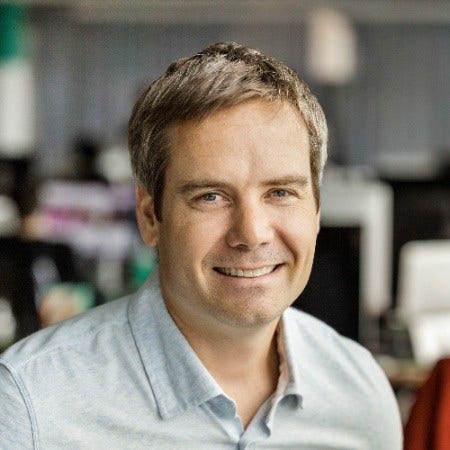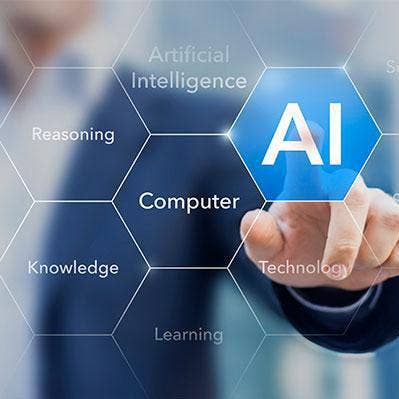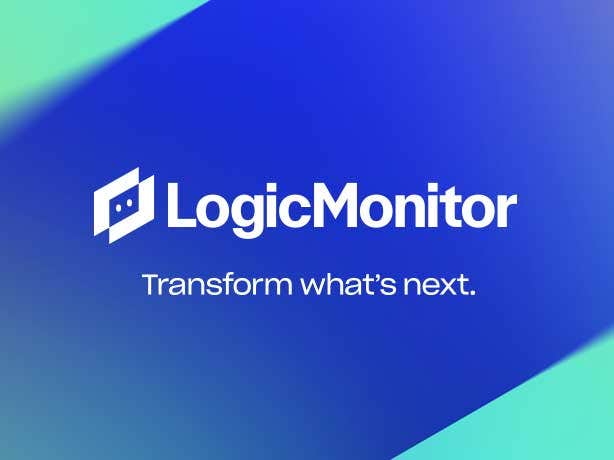LogicMonitor Chief Product Officer: ‘Observability Is The Heartbeat Of Your Business’
‘Observability, to me, is absolutely fundamentally critical for most, if not, all businesses. The reason why I think it’s important is companies are going to differentiate on speed and quality. Observability is not only making sure that you have performance, the most efficient network or the fastest network possible, but it’s ultimately about that [end-user] experience,’ new LogicMonitor Chief Product Officer Taggart Matthiesen tells CRN.

After holding positions at Twitter, Lyft and Salesforce, Taggart Matthiesen is excited to have landed at Santa Barbara, Calif.-based LogicMonitor and “hone in” on next-generation observability capabilities.
“What I get excited about that LogicMonitor gets is we’ve got all of this stuff for on-prem and we have all of these companies that not only use us for that, but they’re starting this modernization journey,” Matthiesen, who is LogicMonitor’s new chief product officer, told CRN. “They’re starting to have services in the cloud and they need to be able to manage and monitor this. So as we provide those services, it’s providing people a single view of their entire infrastructure. It’s on us to make it more digestible.”
Matthiesen joined LogicMonitor, which offers a SaaS-based unified observability platform, in January and brings years of product team leadership experience to the role.
As chief product officer, Matthiesen will oversee product strategy for the company, its unified observability platform—LM Envision—product management, user experience and data science.
“For me it’s really focusing on the solutions. I’m really excited about helping our customers on that modernization journey,” he told CRN. “It’s also working on a lot of effort in the cloud, making sure that we continue to have competitive toolsets out there.
“We’ve already built a lot of this out,” he added. “I think in this space you’re just going to continue to see a lot of innovation.”
He will also be responsible for enhancing LogicMonitor’s ability to provide companies with full visibility and insight they need to enhance their IT environment’s resilience, performance and adaptability.
“Observability, to me, is absolutely fundamentally critical for most, if not, all businesses,” he said. “The reason why I think it’s important is companies are going to differentiate on speed and quality. Observability is not only making sure that you have performance, the most efficient network or the fastest network possible, but it’s ultimately about that experience.”
Here is what Matthiesen told CRN about why he joined LogicMonitor, how his past experience will drive the company’s observability platform forward and what’s to come for the software vendor.
What attracted you to LogicMonitor?
It’s one of those interesting things where you kind of fall into this space. I was probably one of the biggest customers of observability when I was working at Lyft. If you think about it, Lyft is one of those companies where you have to be up every single second. If we’re down and you try to request a ride, it could potentially go to another provider. And so this is super critical for us. I was one of the lead product individuals pushing the teams on, ‘Let’s make sure we have the metrics for uptime, let’s make sure our platform is resilient and let’s make sure we have the tools that are monitoring all of it.’ As I got deeper into the space I realized LogicMonitor has provided a pretty amazing framework for on-prem and cloud. Lyft was more cloud-native and focused on building their own stack. As I was working with the observability teams and started to pick my head [about] what do I wanted to do next, I really got excited about this industry. I also think this is one of those industries that is just simply going to see more focus.
The other thing is, data just continues to explode. We’re just going to continue to see more things coming online, and so observability is going to get harder. It’s also about cost savings and focusing on how I can do more with my systems.
You’ve held roles at Lyft, Twitter and Salesforce. How do you take that experience and apply it to your role now?
I’ll start with Salesforce. I started on the consulting side and I was one of the first individuals that got selected to go get Cisco up and running when we sold them Salesforce in the early days. I was really pushing the product team as they were releasing a bunch of features and we needed these mapping and workflows. I eventually came over to the product side and that really focused my product mentality, especially on the enterprise side, around who are we solving for and what are we solving for them.
Twitter was different. We had some of these brands that were really excited about Twitter, but they didn’t know what to do with it. They couldn’t consume the firehose. So I worked with a team that basically built Twitter’s data business. The premise was I wanted people in marketing to be able to ask the psychographic or demographic questions on people that tweet about Coca Cola, for example … what else are they interested in? What I learned there is data in and of itself is really, really interesting and can be complex, but you need to make sure you give people tools to allow them to ask those questions that give insight. It comes back to observability. If something has an incident, and if we have all of the information, I can actually provide you the details that you need in a format that makes a heck of a lot of sense. It then requires you not to have to go off into multiple applications to go figure that out.
At Lyft I went from the pay team to the fraud team to service and support to the riders team. I owned a significant amount of surface area of that product. It was about the criticality of the service and making sure that all of that stuff was as resilient as possible and performant as possible.
What are some initial projects you want to tackle in your role?
We’ve built a number of amazing features, and I want to take these features and kind of hone them back into solutions and use cases. My goal is to really continue to have the team iterate and innovate but be very clear about what problems that are out there to solve. I think there’s a lot of competitors out there that are talking about all of these features and these components and all these things you can do, and that’s great. But let’s be very clear, what are you solving? When we build features, it’s about what we’re solving for.
The other thing I’m excited about is taking this next-generation stuff now that we have this data and doing things like diagnostics and run books. It’s about how do we make this more digestible for end users. Then getting that feedback so we can give them the necessary configurations that they need. It’s how do we provide more value with some of the bleeding-edge technologies that we’re starting to see in the market, and then really leveraging the fact that we have an amazing product in on-prem and pretty amazing products in cloud and then helping those migrations for a lot of these companies.

Talk to me about the growing role AI plays and observability.
I think there’s a lot of promise there. I also want to make sure we focus on the solutions, what are we actually solving, and doing it in a way that that’s predictable and repeatable. There’s a lot of things that you can do with forensic analysis to inference, correlation and causation … all of this stuff is amazing. Correlation is grouping these together because they look similar based on my algorithms. Causation is more of why did it happen. Companies can talk about having this correlation platform or this causation platform, but if you don’t know how to use it you could actually run into doing the wrong thing. You could think this correlation is working but in fact it’s not what you need. It needs to be tuned or the model needs to be tweaked.
AI has huge problems. But I also want to make sure people are grounded in the fact that this will take time. And I think LogicMonitor is very clear on the ML [machine learning] that they’re using. Whether it’s the dynamic thresholds or it’s the anomaly detection, these are the things that I want to hone in on. We’ll continue to build the platform and continue to make these more customizable, but as we do I don’t want to just throw tools at our customers. I want to show them how we solved it, and that’s the kind of delicate dance with AI.
Why is observability critical for businesses to build and deliver great services?
One, it’s the heartbeat of your business. So much of what I do and how I interact with companies is through a device. So to me, observability is really understanding how your service is performing and, frankly, the experience that your end users are having. Observability, to me, is absolutely, fundamentally critical for most, if not all, businesses. The reason why I think it’s important is companies are going to differentiate on speed and quality. Observability is not only making sure that you have performance, the most efficient network or the fastest network possible, but it’s ultimately about that experience.
It’s also starting to get smarter about where does my infrastructure break down, where does my system break down. A lot of companies, or kind of where the market is today, you have the incident and now it’s how quickly do you identify the incident, how quickly can you solve that. Over time, as these systems get smarter and better, you want to identify that earlier. We can talk about self-healing networks. I think that’s going to take time, but the idea is very sound. If I have all of this information, I can start to predict when things are starting to go the wrong way and I can be smarter about causation. Getting in front of that gets really interesting and exciting. That’s why I’m here.

What can we expect from LogicMonitor in terms of products for the rest of 2023?
You’re going to see us continue to innovate in the areas that we already exist today. It’s all of the on-prem work that we’re doing, all the work with logs, all the work with cloud. You’re going to see us really push those stories on what we’re solving. We already have solutions for AIOps, specifically around anomaly detection, and I think you’re going to see us further that this year. We’re investing heavily in our cloud offerings, like ease of use and speed.